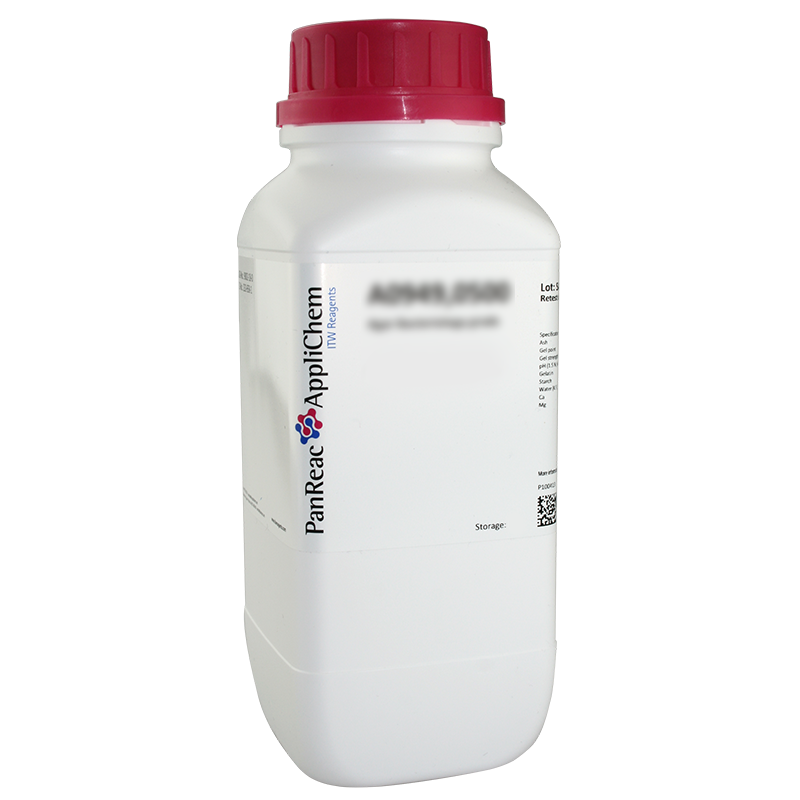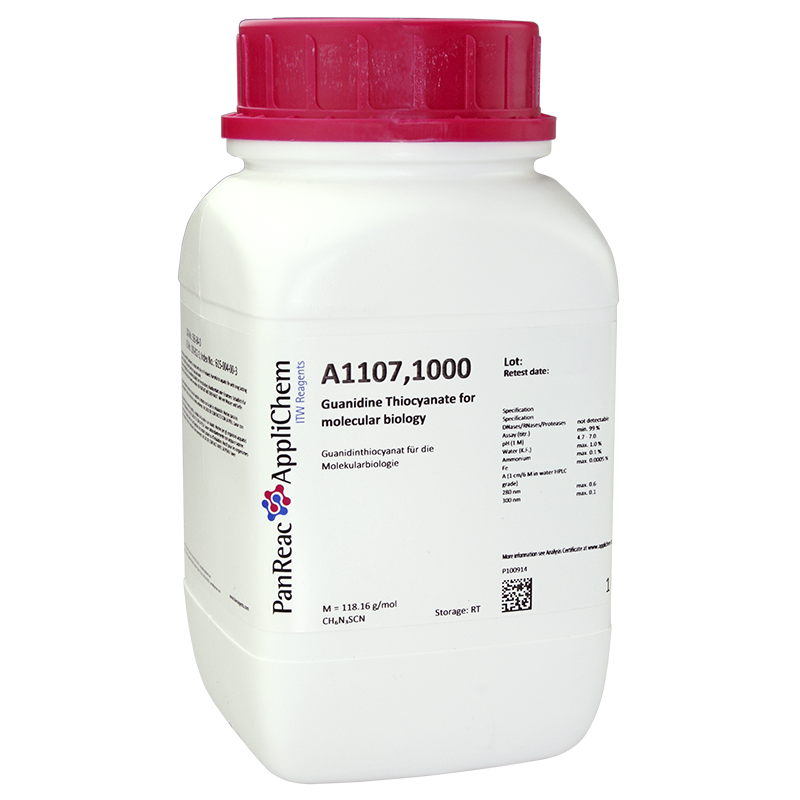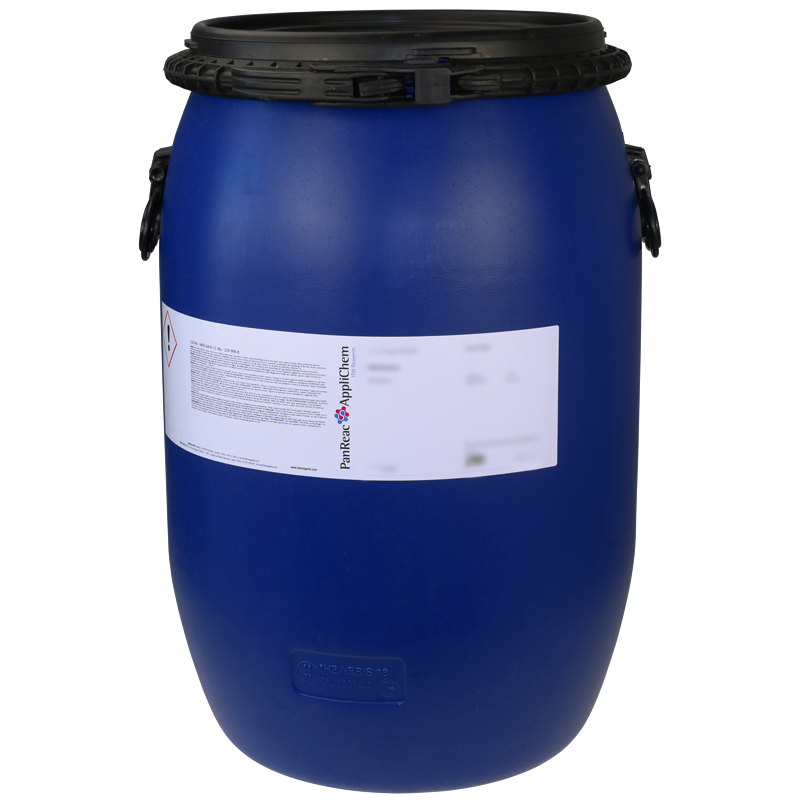Comments
Guanidinium thiocyanate is a salt consisting of the guanidinium cations [CH6N3]+, which is the conjugate acid of guanidine, and thiocyanate anions. It is used in biochemistry mainly as a general protein denaturant, i.e., a chaotropic agent, although it is most commonly used for the extraction of DNA and RNA.
FAQs
What is the CAS number of Guanidine Thiocyanate ?
The CAS number of Guanidine Thiocyanate is 593-84-0.CAS Guanidine Thiocyanate ?
The CAS number of Guanidine Thiocyanate is 593-84-0.CAS 593-84-0?
The CAS number 593-84-0 is assigned to Guanidine Thiocyanate .What is guanidine thiocyanate?
Guanidine thiocyanate (GTC) or guanidinium (iso)thiocyanate (GITC) is a chaotropic and strongly denaturing agent. It is commonly used for RNA extraction and isolation. Guanidine thiocyanate is also known as: guanidinium thiocyanate, guanidine isothiocyanate, guanidinium isothiocyanate, guanidine sulfocyanide, guanidinium sulfocyanide, guanidine sulfocyanate, guanidinium sulfocyanate, guanidine rhodanide, guanidinium rhodanide or amino(imino)methanaminium thiocyanate (IUPAC name). It may also be referred to by the following abbreviations or acronyms: GITC, GTC, GuaSCN. Guanidine salts are also called guanidinium salts, because the guanidinium cation (C(NH2)+3) is the conjugate acid of guanidine. ¿What are other names for guanidine thiocyanate?
Guanidine thiocyanate is also known as: guanidinium thiocyanate, guanidine isothiocyanate, guanidinium isothiocyanate, guanidine sulfocyanide, guanidinium sulfocyanide, guanidine sulfocyanate, guanidinium sulfocyanate, guanidine rhodanide, guanidinium rhodanide or amino(imino)methanaminium thiocyanate (IUPAC name). It may also be referred to by the following abbreviations or acronyms: GITC, GTC, GuaSCN. Guanidine salts are also called guanidinium salts, because the guanidinium cation (C(NH2)+3) is the conjugate acid of guanidine. What are the applications of guanidine thiocyanate?
Guanidine thiocyanate (GTC) or guanidinium (iso)thiocyanate (GITC) is a chaotropic and strongly denaturing agent. It is used for COVID-19 research, virus inactivation, protein denaturation, RNase inactivation, and to isolate RNA (as well as DNA and proteins in some cases). In addition to a strong protein denaturing effect, high concentrations of chaotropic agents are involved in cell lysis. Guanidine thiocyanate is commonly used in combination with phenol-chloroform for RNA extraction and isolation. It is used by kit manufacturers, in molecular biology laboratories and in the medical and biopharmaceutical industry. How is guanidine thiocyanate used?
Guanidine thiocyanate is commonly used in combination with phenol-chloroform for RNA extraction and isolation. This method consists of a phase separation by centrifugation resulting in an aqueous upper phase and an organic lower phase (mainly chloroform). Almost all RNA is present in the aqueous phase while DNA and proteins are in the interphase and organic phase respectively. Guanidine thiocyanate denatures proteins, including RNases and separates rRNA from ribosomal proteins, while phenol, isopropanol and water are low solubility solvents. In the presence of chloroform, these solvents separate completely into two phases that are recognized by their color: an upper, clear aqueous phase (containing the nucleic acids) and a lower phase (containing the proteins dissolved in phenol and the lipids dissolved in chloroform). Is guanidine isothiocyanate the same as guanidine thiocyanate?
Yes, these are two different names for the same compound. It is also known by other names such as guanidinium thiocyanate, guanidinium isothiocyanate, guanidine sulfocyanide, guanidinium sulfocyanide, guanidine sulfocyanate, guanidinium sulfocyanate, guanidine rhodanide, guanidinium rhodanide or amino(imino)methanaminium thiocyanate (IUPAC name). It may also be referred to by the following abbreviations or acronyms: GITC, GTC, GuaSCN. Guanidine salts are also called guanidinium salts, because the guanidinium cation (C(NH2)+3) is the conjugate acid of guanidine. What is the difference between guanidine thiocyanate and guanidinium thiocyanate?
Neither, they are two different ways of naming the same compound. Guanidine salts are also called guanidinium salts, because the guanidinium cation (C(NH2)+3) is the conjugate acid of guanidine. Other names for the same substance are: guanidine isothiocyanate, guanidinium isothiocyanate, guanidine sulfocyanide, guanidinium sulfocyanide, guanidine sulfocyanate, guanidinium sulfocyanate, guanidine rhodanide, guanidinium rhodanide or amino(imino)methanaminium thiocyanate (IUPAC name). It may also be referred to by the following abbreviations or acronyms: GITC, GTC, GuaSCN What is a chaotropic agent?
A chaotropic agent is a molecule in a water solution that can alter the network of hydrogen bonds between water molecules. This has an effect on the stability of the native state of other molecules in solution, such as proteins and nucleic acids, by weakening the hydrophobic effect. Chaotropic agents, such as guanidine thiocyanate, cause a "disorder" in the structure of proteins that can cause their denaturation. They are used for isolation of nucleic acids. What does GuaSCN mean?
GuaSCN is the abbreviated name for guanidine thiocyanate, a chaotropic and strongly denaturing agent. It is commonly used in combination with phenol-chloroform for RNA extraction and isolation. Guanidine thiocyanate is also known as: guanidinium thiocyanate, guanidine isothiocyanate, guanidinium isothiocyanate, guanidine sulfocyanide, guanidinium sulfocyanide, guanidine sulfocyanate, guanidinium sulfocyanate, guanidine rhodanide, guanidinium rhodanide or amino(imino)methanaminium thiocyanate (IUPAC name). It may also be referred to by the following abbreviations or acronyms: GITC, GTC, GuaSCN. Guanidine salts are also called guanidinium salts, because the guanidinium cation (C(NH2)+3) is the conjugate acid of guanidine. What does GITC mean?
GITC is the abbreviated name for guanidine thiocyanate, a chaotropic and strongly denaturing agent. It is commonly used in combination with phenol-chloroform for RNA extraction and isolation. Guanidine thiocyanate is also known as: guanidinium thiocyanate, guanidine isothiocyanate, guanidinium isothiocyanate, guanidine sulfocyanide, guanidinium sulfocyanide, guanidine sulfocyanate, guanidinium sulfocyanate, guanidine rhodanide, guanidinium rhodanide or amino(imino)methanaminium thiocyanate (IUPAC name). It may also be referred to by the following abbreviations or acronyms: GITC, GTC, GuaSCN. Guanidine salts are also called guanidinium salts, because the guanidinium cation (C(NH2)+3) is the conjugate acid of guanidine. What does GTC mean?
GTC is the abbreviated name for guanidine thiocyanate, a chaotropic and strongly denaturing agent. It is commonly used in combination with phenol-chloroform for RNA extraction and isolation. Guanidine thiocyanate is also known as: guanidinium thiocyanate, guanidine isothiocyanate, guanidinium isothiocyanate, guanidine sulfocyanide, guanidinium sulfocyanide, guanidine sulfocyanate, guanidinium sulfocyanate, guanidine rhodanide, guanidinium rhodanide or amino(imino)methanaminium thiocyanate (IUPAC name). It may also be referred to by the following abbreviations or acronyms: GITC, GTC, GuaSCN. Guanidine salts are also called guanidinium salts, because the guanidinium cation (C(NH2)+3) is the conjugate acid of guanidine. What is the difference between guanidine thiocyanate and guanidine hydrochloride?
In guanidine thiocyanate both ions are chaotropic, whereas in guanidine hydrochloride only guanidine is, making guanidine thiocyanate a more powerful, though less soluble, denaturant. Due to the coronavirus pandemic, our awareness of the importance of genetic testing and genomic workflows has greatly increased. Two of the substances that have become very important are guanidine hydrochloride and guanidine thiocyanate. These chaotropic substances are used for the extraction and cleaning of nucleic acids from biological samples. In addition to individual guanidine products, ITW Reagents has developed an all-in-one solution for simultaneous extraction of DNA, RNA and proteins based on guanidine, our PanReac AppliChem branded TRItidy G™. What is the CAS number of guanidine thiocyanate?
The CAS number of guanidine thiocyanate is 593-84-0. Guanidine thiocyanate solutions, being mixtures of chemicals, do not have a CAS number (only their individual components). What is CAS number 593-84-0?
The CAS number is a unique numeric identifier, which designates a single, specific substance. CAS number 593-84-0 corresponds to guanidine thiocyanate. Solutions of guanidine thiocyanate, being mixtures of substances, do not have a CAS number. Guanidine thiocyanate is also known as: guanidinium thiocyanate, guanidine isothiocyanate, guanidinium isothiocyanate, guanidine sulfocyanide, guanidinium sulfocyanide, guanidine sulfocyanate, guanidinium sulfocyanate, guanidine rhodanide, guanidinium rhodanide or amino(imino)methanaminium thiocyanate (IUPAC name). It may also be referred to by the following abbreviations or acronyms: GITC, GTC, GuaSCN. Guanidine salts are also called guanidinium salts, because the guanidinium cation (C(NH2)+3) is the conjugate acid of guanidine. To which substance does the CAS number 593-84-0 correspond?
The CAS number is a unique numeric identifier, which designates a single, specific substance. CAS number 593-84-0 corresponds to guanidine thiocyanate. Solutions of guanidine thiocyanate, being mixtures of substances, do not have a CAS number. Guanidine thiocyanate is also known as: guanidinium thiocyanate, guanidine isothiocyanate, guanidinium isothiocyanate, guanidine sulfocyanide, guanidinium sulfocyanide, guanidine sulfocyanate, guanidinium sulfocyanate, guanidine rhodanide, guanidinium rhodanide or amino(imino)methanaminium thiocyanate (IUPAC name). It may also be referred to by the following abbreviations or acronyms: GITC, GTC, GuaSCN. Guanidine salts are also called guanidinium salts, because the guanidinium cation (C(NH2)+3) is the conjugate acid of guanidine. What is the molecular formula of guanidine thiocyanate?
The molecular formula of guanidine thiocyanate is C2H6N4S. What is the molar mass of guanidine thiocyanate?
The molar mass of guanidine thiocyanate is 118.16 g/mol. What is the molecular weight of guanidine thiocyanate?
Literature
(1) Chirgwin, J.M. et al. (1979) Biochemistry 18, 5294-5299. Isolation of biologically active ribonucleic acid from sources enriched in ribonuclease. (2) MacDonald, R.J. et al. (1987) Methods Enzymol. 152, 219-227. Isolation of RNA using guanidinium salts. (3) Lizardi, P.M. (1983) Methods Enzymol. 96, 24-38. Methods of the preparation of messenger RNA. (4) Chomczynski, P. & Sacchi, N. (1987) Anal. Biochem. 162, 156-159. Single-step method of RNA isolation by acid guanidinium thiocyanate-phenol-chloroform extraction. (5) Goda, S.K. & Minton, N.P. (1995) Nucleic Acids. Res. 23, 3357-3358. A simple procedure for gel electrophoresis and Northern blotting of RNA.










